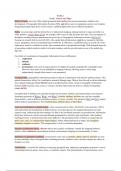Summary
Thinking Spatially - Final Summary (based on 6 weeks)
- Course
- Institution
This is my summary for the course "Thinking Spatially at the University of Amsterdam". It is based on readings, notes, and lectures. It provides with many insights on research methods, qualitative methods, quantitative methods, history and use of GIS, spatial analysis, and so on.
[Show more]



